Wartime Newspapers

The
Ministry
of
Information
(MOI)
was
formed
on
4th
September
1939,
the
department
was
responsible
for
the
publicity
and
propaganda
used
throughout
the
Second
World
War.
The
MOI
was
to
supply
the
news
from
both
home
and
overseas
and
to
enforce
the censorship that had been put in place.
Propaganda
Propaganda
was
a
major
force
in
both
keeping
moral
high
at
home
but
publishing
“good
news”
and
triumphant
posters
but
at
the
same time to attack the enemy showing them to be weak and a broken spent force to break its moral.
Censorship
A
blanket
censorship
of
the
press
was
put
in
place
within
months
of
the
outbreak
of
the
First
World
War.
Censorship
during
the
First
World
War
was
designed
to
keep
the
full
horrors
of
the
trenches
from
the
British
public
as
it
was
feared
if
the
full
facts
were
freely
available
the
public
would
demand
the
war
be
stopped
immediately.
Journalists
based
in
the
UK
were
given
press
releases
issue
by
the
Press
Bureau
these
were
heavily
censored
to
exclude
any
bad
news
and
would
only
have
photographs
taken
by
a
few
selected
conscripted war photographers who had little training, so photographs would be out of focus, poorly shot and grainy.
Whilst
the
war
on
the
home
front
was
more
easily
to
record,
it
too
was
heavily
censored
so
that
reports
of
attacks
would
not
be
fed
back
to
the
enemy
giving
the
both
propaganda
material
and
tactical
information
on
how
well
a
raid
had
been.
However,
sometimes
articles
would
be
published
without
going
through
the
censor,
one
of
these
was
a
supplement
by
the
Southend
Standard
detailing
a
Zeppelin
raid
including
lists
of
those
killed,
roads
bombed
and
uncensored
photos
showing
bomb
damage,
a
recall
of
the
offending
supplement
was
issued
but
by
the
time
it
was
sent
out
the
newspaper
had
been
on
sale
and
was
selling
fast,
so
the
recall
was
cancelled.
During
the
Second
World
War
the
restrictions
were
reduced,
with
a
regulation
of
self-enforcement.
Guidance
was
given
on
specific
topics
that
were
subject
to
censorship,
the
press
were
then
invited
to
submit
stories
that
could
fall
foul
of
what
were
known
as
‘Defence
Notices’.
Any
articles
submitted
would
be
checked
over
by
the
censor
with
any
deductions
and
changes
being
highlighted
before the article would be released for publication.
Southend Timeline Southend-on-Sea © 2009 - 2024. All Rights Reserved
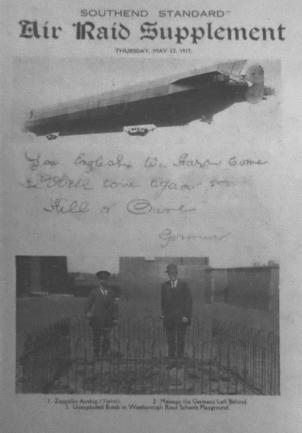
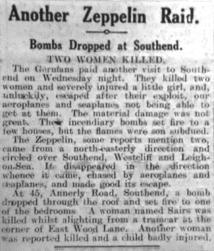
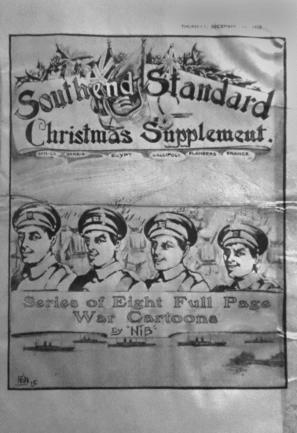
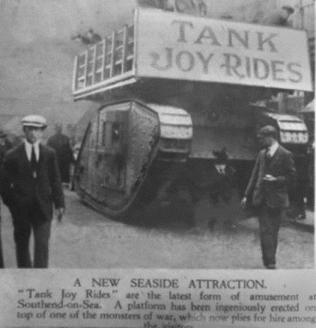
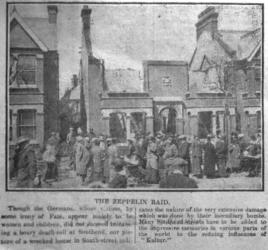
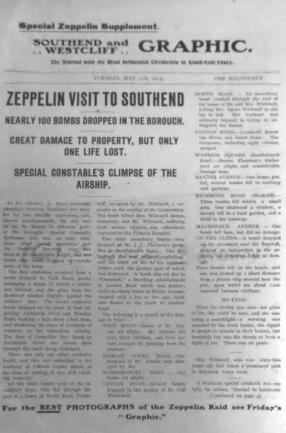
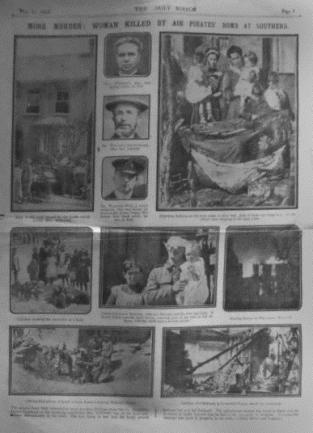
Undated
cutting
from
an
unknown newspaper
Southend-on-Sea
Undated
cutting
from
an
unknown
newspaper
Daily Mirror Tuesday 11th May 1915
Southend
and
Westcliff
Graphic
Tuesday
11th
May 1915
Southend
Standard
Thursday
13th
May
1915.
This
supplement
was
not
given
official
clearance
from
the
censor
before
it
went
on
sale
to
the
public.
An
urgent
recall
was
ordered,
however,
by
that
time
it
was
already
in
circulation,
the
recall was cancelled
Southend
Standard
Thursday
16th
December
1915
Undated cutting from an unknown newspaper. The Tank Joy Rides were at the Kursaal, the tank pictured above is a British Mk4 "Female," it was bought
by
a
syndicate
of
ex
tank
crew.
A
second
tank
this
time
a
Mk
5
was
also
used
but
it
was
operated
by
a
different
group
of
investors,
the
Mk5's
passenger
deck
was
smaller,
the
tanks
were
used
during
the
early
1920's.
During
the
First
World
War
the
Kursaal
remained
open
to
the
public
a
special
attraction
included a Trenches of the Somme replica




Southend-on-Sea’s No 1 History Website! Documenting The Town & The Townspeople

Now Incorporating The Sea Of Change Website
Website Info:


Chalkwell ▪ Eastwood ▪ Leigh-on-Sea ▪ Prittlewell ▪ Shoeburyness ▪ Southchurch ▪ Thorpe Bay ▪ Westcliff-on-Sea
SOUTHEND CITY
































































